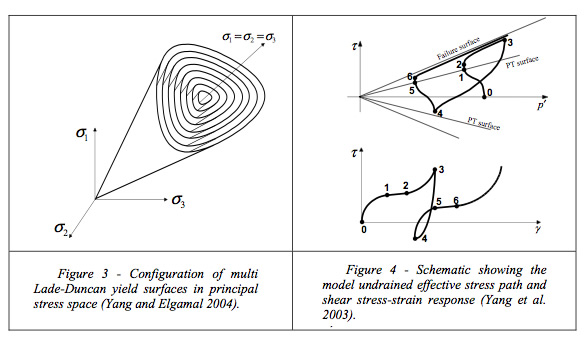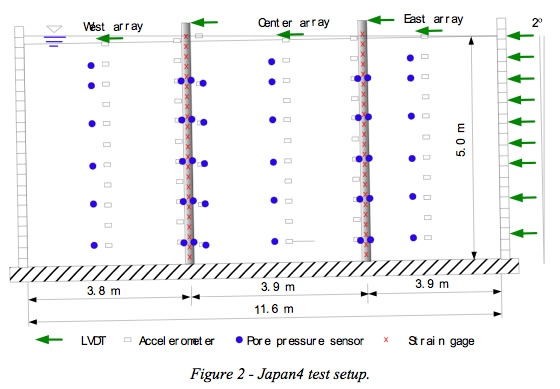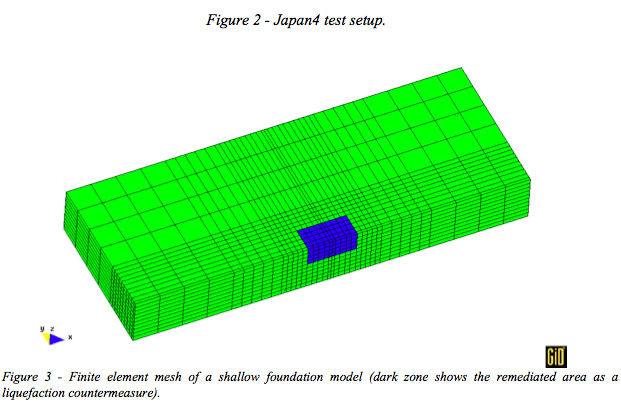Abutment and Deep Foundation Modeling and Simulation - 4242005
| Project Title—ID Number | Abutment and Deep Foundation Modeling and Simulation - 4242005 |
| Start/End Dates | 10/1/05 – 9/30/06 |
| Funding Source | PEER/CA Transp. Fund |
| Project Leader (boldface) and Other Team Members | Ahmed Elgamal (UCSD/F), Jinchi Lu (GS), Liangcai He (GS), Linjun Yan (GS) |
Project goals and objectives
With a focus on ground-foundation-structure simulation efforts, develop and provide computational modeling capabilities for Abutment and Deep Foundations. Developments within the PEER OpenSees Platform are a main goal.
Role of this project in supporting PEER's mission (vision)
(1) Development of Geotechnical and Soil-Structure Interaction Capabilities within the PEER OpenSees Simulation Platform, (2) Utilization of OpenSees for Large-Scale Simulation of Seismic Response of Ground-Structure Systems, and (3) Contributions towards the PEER Performance-Based Earthquake Engineering (PBEE) Simulation capabilities.
Methodology employed
(1) Continued development of geomechanics seismic response constitutive models (e.g., Figs. 1 and 2) and soil 2D and 3D elements within the OpenSees simulation Platform, (2) Numerical implementation of the related algorithms within the OpenSees main code, (3) Preparation of documentation for the implemented elements and constitutive models with demonstrative examples (currently available through the OpenSees website http://opensees.berkeley.edu under Developer pages, University of California, San Diego, and (4) Development of user-interfaces for utilization of OpenSees in analyses in large-scale soil-structure interaction simulations.

Brief Description of previous year's achievements, with emphasis on accomplishments during last year (Year 8)
(1) Effort towards 3D modeling of the PEER Humboldt Bay Bridge has been completed and Journal publications have been submitted.
(2) Large-scale modeling of pile supported structures under seismic excitation is underway, and (3) Calibration using data from the PEER/NSF supported US-Japan shake-table experiments (Table 1 and Fig. 2) has been undertaken, numerical simulations have been conducted (Figure 3), and design-oriented guidelines have been proposed.



Other similar work being conducted within and outside PEER and how this project differs
The project complements the numerical simulation efforts related to seismic response of ground- foundation-structure systems, within and outside PEER. It differs in terms of the current focus on large-scale 3-dimensional (3D) modeling efforts utilizing the PEER simulation Platform OpenSees, and the efforts towards modeling of lateral spreading effects on foundation systems and the supported superstructure.
Describe any instances where you are aware that your results have been used in industry
Discussions are underway with Earth Mechanics, Inc. to collaborate on numerical simulation using OpenSees for the important situation of seismic response of Port facilities (Pile supported Wharfs), and employment of OpenSees to provide further capabilities compared to other available tools in practice, such as the computer program FLAC.
Expected milestones & deliverables
(1) Journal and conference publications focused on large-scale 3D seismic response of soil- structure systems, (2) Continued developments within the OpenSees framework in collaboration with other PEER researchers within the geomechanics and structural domains of research.
Back to Funded Project Archive main page

